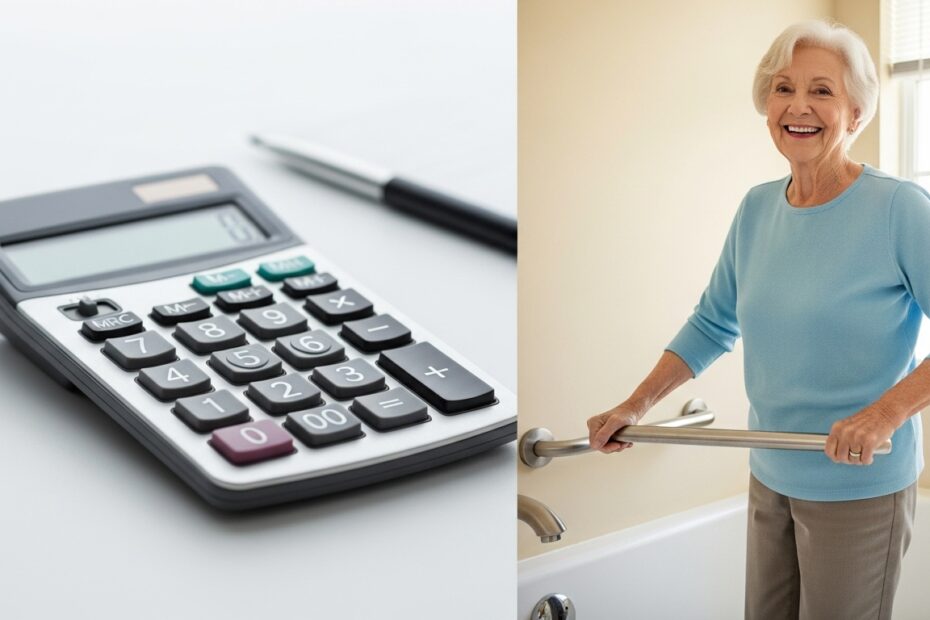When an older adult falls, the immediate concern is rightfully on their physical well-being. However, the consequences of a fall extend far beyond the initial injury, creating a ripple effect that carries a significant and often devastating financial burden. This economic impact is felt at every level, from the individual’s savings to national healthcare budgets. Understanding the sheer scale of these costs highlights the urgent need for effective fall prevention.
The National Price Tag: Billions in Direct Medical Costs
The most direct way to measure the financial burden of falls is through healthcare spending. The numbers are staggering. In the United States alone, the medical costs related to falls in older adults are estimated to be $50 billion annually.[1][2][3] This figure encompasses all direct medical expenses required to treat fall-related injuries.
A study published in the Journal of the American Geriatrics Society broke down this enormous cost, revealing who shoulders the primary burden:
- Medicare: Pays approximately $28.9 billion.[1][3]
- Medicaid: Pays around $8.7 billion.[1][3]
- Private Insurance and Other Payers: Cover the remaining $12 billion.[1][3]
These costs are driven by the high price of medical interventions. A single fall can lead to a cascade of expensive treatments. The average hospital cost for a fall-related injury is around $30,000, and this figure tends to rise with the patient’s age.[2] For falls that result in a hip fracture—one of the most common and serious outcomes—the costs are even higher.
Fatal falls also contribute to the economic toll, with an estimated $754 million in medical spending each year.[1][3] As the population ages, experts predict these costs will continue to surge unless widespread prevention efforts are implemented.[2]
Beyond the Hospital: The High Cost of Ongoing Care
The financial strain doesn’t end when a senior is discharged from the hospital. In many cases, it’s just the beginning.
- Rehabilitation: Physical and occupational therapy are often necessary to regain strength, mobility, and independence. These services can continue for months, leading to accumulating costs.[4]
- Long-Term Care: A serious fall is often a pivotal event that leads to the need for long-term care in a nursing home or assisted living facility.[4][5] This transition comes with a substantial and ongoing financial commitment that can quickly deplete life savings. Falls are associated with an increased risk of needing placement in long-term care after a hospital stay.[5]
- Home Modifications: To make the home safer and prevent future falls, families often need to invest in modifications like installing grab bars, ramps, and stairlifts. While crucial for safety, these changes represent another layer of out-of-pocket expenses.[4]
One study estimated the average out-of-pocket costs for a senior who experiences a fall-related injury to be around $1,363.[6]
The Hidden Costs: Indirect and Societal Burdens
The financial impact of falls extends beyond direct medical bills. These “indirect costs” are often harder to quantify but are just as significant.[4]
- Impact on Caregivers: Family members often become informal caregivers after a loved one falls. They may need to reduce their work hours or leave their jobs entirely to provide care, resulting in lost income and financial stress.[4]
- Loss of Independence and Quality of Life: While not a direct monetary cost, the loss of independence is a profound consequence.[4] Fear of falling can lead to reduced physical activity, which in turn causes muscle weakness and a higher risk of future falls, creating a vicious cycle.[1][4] This decline in activity and social engagement severely impacts an older adult’s quality of life.[4]
- Increased Labor Costs: In skilled nursing facilities, every fall requires significant staff time for documentation, taking away from direct patient care and increasing labor expenses.[7]
- Strain on the Healthcare System: The sheer volume of fall-related incidents puts immense pressure on the entire healthcare system.[8] Emergency departments become more crowded, hospital beds are occupied, and healthcare providers are stretched thin, which can affect the quality of care for all patients.[8]
The financial burden of falls is a massive and growing public health issue. These costs—spanning from billion-dollar national expenditures to the personal savings of a family—underscore the immense value of prevention. Investing in strategies like home safety modifications, exercise programs, and regular medical reviews is not just an investment in health, but a crucial economic decision that can save billions and, more importantly, preserve the independence and well-being of older adults.
Join Us on Youtube – Senior Recuperate
